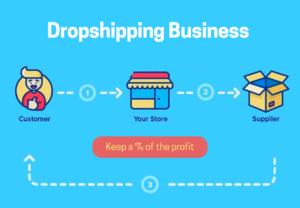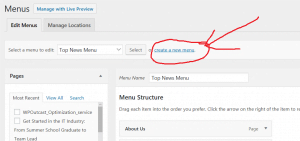Deciding on the best cloth diaper for your infant is a personal decision; one method has no apparent health advantages. In truth, neither the American Academy of Pediatrics (AAP) nor the Environmental Protection Agency (EPA) have an official position on diapers. As a result, parents are frequently left to determine which choice best meets the needs and goals of their family.
Some parents, for example, know from the start that they prefer the portability of disposable diapers. Meanwhile, other parents are persuaded that cloth diapers are the right way, especially given how long disposable diapers take to degrade in a landfill.
Regardless of your feelings or reasoning, if you are thinking about cloth diapers for your infant or want to move to cloth diapers after using disposables, it is critical to make an informed selection. Here’s a closer look at anything you should know about cloth diapers.
What Is A Cloth Diaper?
A cloth diaper, or a reusable diaper, consists of textiles such as natural fibers, man-made materials, or a combination of both. Cloth diapers differ from disposable diapers, constructed of synthetic fibers and polymers. They are frequently made from industrial cotton bleached white or left in their natural hue. Wool, bamboo, and unbleached hemp are other natural fiber textile materials.
Prefold Cloth Diapers
Prefold diapers are similar to flat diapers in appearance, but they are pre-folded into three panels, the center of which is the most absorbent. Prefolds, like flats, need safety pins or clips to fasten and a diaper cover to prevent leakage. It’s an ideal choice as a newborn diaper since prefolds come already layered. They can be a speedier and less expensive alternative to a flat diaper.
Prefold diapers may be a suitable alternative if you want to start cloth diapering on a budget and are willing to forgo convenience to save money.
Pocket Cloth Diapers
These cloth diapers, shaped like disposable diapers, include elastic waist and leg holes for good mess containment and simple fasteners for easy fit adjustment around the waist. Pocket diapers can be one size or multiple sizes. As the name implies, these cloth diapers have an inner pocket that must be loaded with absorbent inserts.
Numerous cloth diaper insert options are available, including recyclable inserts made of microfiber, which is cotton or hemp, as well as disposable inserts. Most pocket cloth diapers have linings with stay-dry material, which keeps the infant dry even when wet since urine travels through the diaper lining and gets absorbed inside the insert.
Fitted Cloth Diapers
Fitted cloth diapers, like flats and prefolds, require an outside waterproof diaper cover to contain leaks. On the other hand, the absorbent inner of a fitted diaper is an actual diaper with hooks or Velcros and elastics instead of a flat or prefold sheet.
Fitteds are relatively simple to put on a baby, albeit they do necessitate the addition of a diaper cover. Fitted diaper brands give your baby full-coverage absorbency, ideal for nighttime use.
You can reuse the outer waterproof cover if the inner cloth diaper is soiled.
A Guide On How To Choose A Cloth Diaper
1. Learn About the Different Parts of a Cloth Diaper
To prevent becoming overwhelmed by all of the names and categories while selecting a cloth diaper, parents should become acquainted with the components or sections of a cloth diaper. Continue reading to learn more about them and how they can assist you.
- Shell: the shell or cover acts as the outer or surface layer. It is usually waterproof and can be made of various textiles, including cotton and polyester.
- Soaker: the insert, often known as a soaker pad, is the primary absorbent layer of a cloth diaper. It can be constructed of multiple layers of organic cotton, bamboo, hemp, or microfiber.
- Fastener: the fastener is the cloth diaper’s closing mechanism. It might take the shape of snaps or velcro. Those with prints are usually tight, but they take time to change. On the other hand, those with velcro fastening are simple to put on yet readily removed by your infant.
- Gusset: Gusset is a band around the leg area that prevents leakage.
2. Choose the Outer Layer Material of the Cloth Diaper
The outer layers of cloth diapers are often made of cotton or PUL. Cotton is noted for its natural fibers’ breathability and suppleness. It is, however, more prone to leaks.PUL (polyurethane laminate), on the other hand, is waterproof but not exceptionally breathable. Consider which one will best meet your baby’s nappy demands.
3. When It Comes to Diaper Inserts, Choose a Comfortable Fabric
Most people switch to cloth diapers for convenience. The fibers utilized can assist in relieving heat on your baby’s skin, and comfort is essential with babies. We’ve listed some of the most popular cloth diaper fabrics and their advantages.
- Microfiber is a fabric that is often used in locally accessible cloth diapers. Despite being the least absorbent of the fabric types and lasting only 2-3 hours, it is an excellent choice for daytime use due to its presko feel. It is beneficial on scorching hot days. Parents will also have an easier time washing it because it is made of a thin material that dries quickly.
- Cotton: Because cotton absorbs moisture efficiently, it is a popular fabric in cloth diapers. Cotton is a plant-based fiber that has been used for centuries.
It’s inherently absorbent and thick, making it ideal for all sorts of cloth diapers, including inserts. Cotton inserts are commonly used to increase the absorbency of a diaper. It can also refer to the common lampin we are all familiar with.
Final Takeaways;
Remember that determining if cloth diapering is suitable for you and your family is not an either-or option. There are no incorrect approaches. You may soon realize that cloth diapering can improve the diapering routine for you and your child if you experiment with different methods. But you should also consider the packaging method used for optimal quality.







